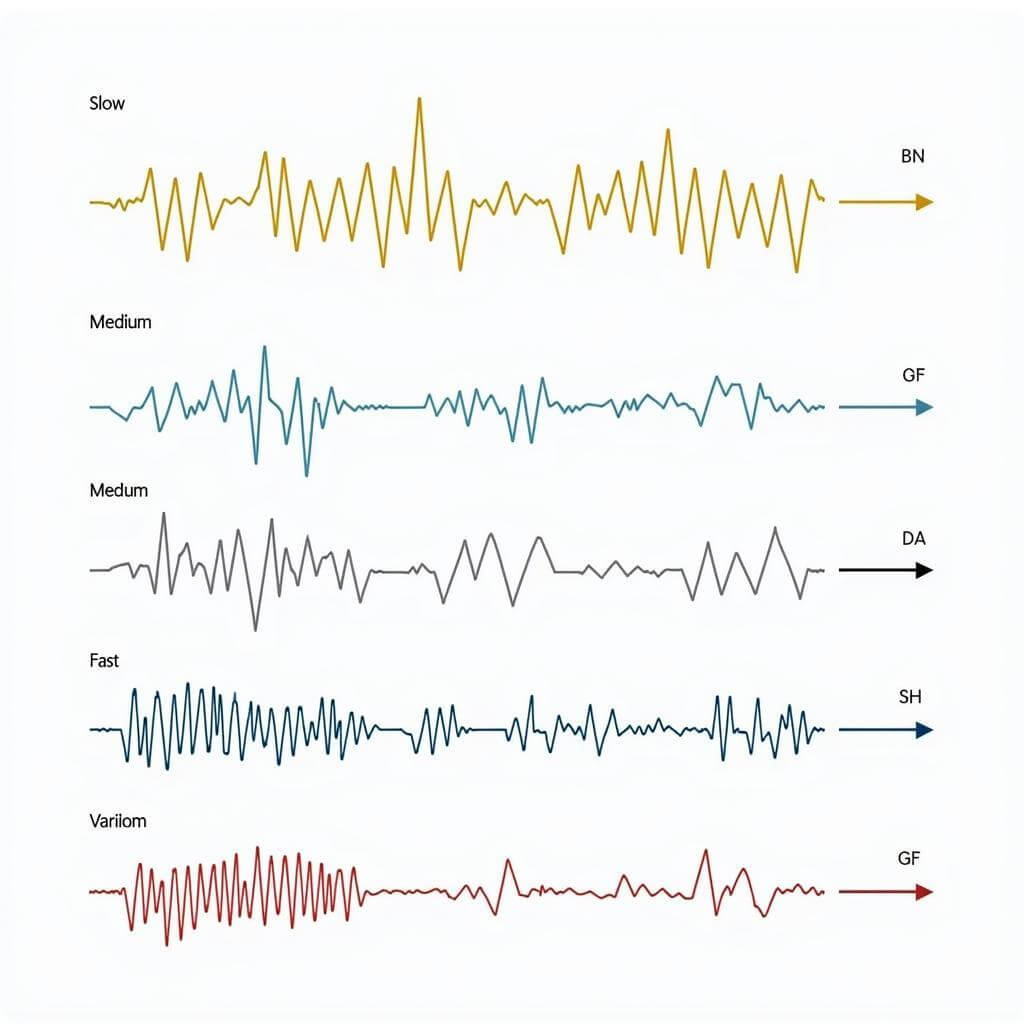As an experienced IELTS instructor, I understand the challenges students face when encountering audio recordings with varying speeds in the listening test. This crucial skill can significantly impact your overall performance. Let’s explore effective strategies to tackle this aspect of the IELTS listening exam.
Understanding Audio Speed Variations in IELTS Listening
In the IELTS listening test, you’ll encounter recordings with different speech rates, accents, and intonations. These variations are designed to assess your ability to comprehend spoken English in diverse real-life situations.
Types of Speed Variations
- Natural speech: Reflects everyday conversations
- Slow and deliberate: Often used for announcements or instructions
- Fast-paced: Simulates excited or urgent communication
- Varying within a single recording: Mimics real-life scenarios where speakers may change their pace

Examples of Varying Speech Rates in IELTS Listening
To better prepare you for the test, here are some examples of how speech rates may vary:
- “Welcome to the Royal Museum. Our guided tour will begin in five minutes.” (Slow, clear announcement)
- “The next train to London will depart from platform 3 at 2:15 PM.” (Medium-paced, formal announcement)
- “I can’t believe it! We’ve won the competition!” (Fast, excited speech)
- “First, add the flour slowly. Then, quickly whisk in the eggs.” (Varying speed within instructions)
- “The economic forecast suggests a gradual recovery, but experts warn of potential setbacks.” (Complex content with varying pace)
Strategies for Handling Audio with Varying Speeds
1. Active Listening
Focus intently on the audio, anticipating changes in speed and content. This heightened awareness will help you adapt quickly to variations.
2. Note-taking Techniques
Develop a flexible note-taking system that allows you to capture key information regardless of speech rate:
- Use abbreviations and symbols
- Focus on keywords rather than full sentences
- Practice rapid writing to keep up with fast sections
3. Prediction and Anticipation
Before each section, read the questions carefully and predict potential answers. This preparation will help you catch crucial information even when the speech is rapid.
4. Contextual Understanding
Pay attention to the overall context of the recording. Understanding the topic and situation can help you infer information you might miss due to speed variations.
5. Practice with Diverse Materials
Expose yourself to a wide range of audio materials:
- Podcasts
- News broadcasts
- Academic lectures
- Casual conversations
Vary the playback speed of these materials to challenge yourself further.
Common Mistakes to Avoid
- Panicking when encountering fast speech
- Focusing too much on difficult words, missing subsequent information
- Neglecting to read questions beforehand
- Trying to write everything down verbatim
- Losing focus during slower sections, assuming they’re less important
Practical Exercises for Improvement
-
Speed Variation Drills: Listen to short audio clips at various speeds, progressively increasing difficulty.
-
Shadowing Technique: Repeat what you hear immediately after the speaker, matching their pace and intonation.
-
Dictation Practice: Transcribe audio passages with varying speeds to improve your listening accuracy and writing speed.
-
Multi-tasking Exercises: Listen to audio while performing simple tasks to enhance your ability to process information at different speeds.
-
Mock Tests with Timed Sections: Simulate exam conditions with practice tests featuring diverse speech rates.
Applying Skills in the IELTS Test
During the actual IELTS listening test:
- Stay calm and focused, especially during faster sections.
- Use the time between sections to prepare for the next part.
- Trust your preparation and rely on your practiced strategies.
- Don’t dwell on missed information; move on to the next question.
- Review your answers in the transfer time, focusing on sections where speed variations were challenging.
Conclusion
Mastering the skill of handling audio with varying speeds is crucial for success in the IELTS listening test. By implementing these strategies and consistently practicing with diverse materials, you’ll develop the flexibility and confidence needed to tackle any speech rate you encounter. Remember, the key is regular practice and a positive mindset. Keep refining your skills, and you’ll see significant improvement in your IELTS listening performance.
We encourage you to share your experiences and tips for handling varying audio speeds in the comments below. For more IELTS preparation resources and practice materials, explore our other articles on IELTS.NET.